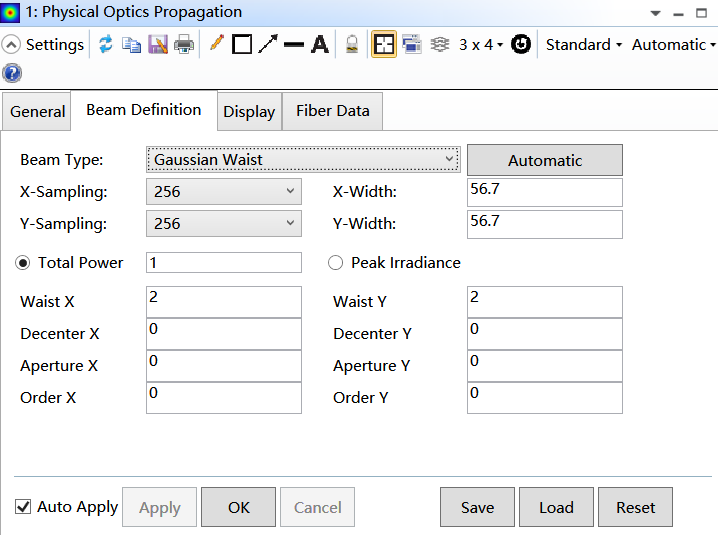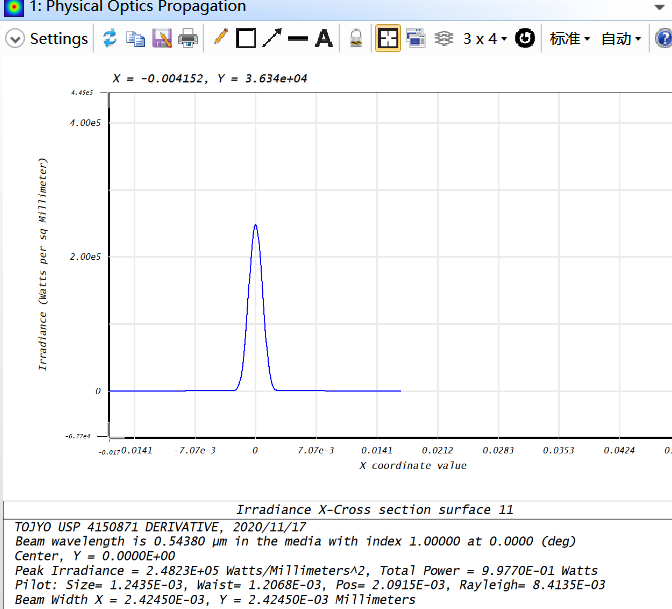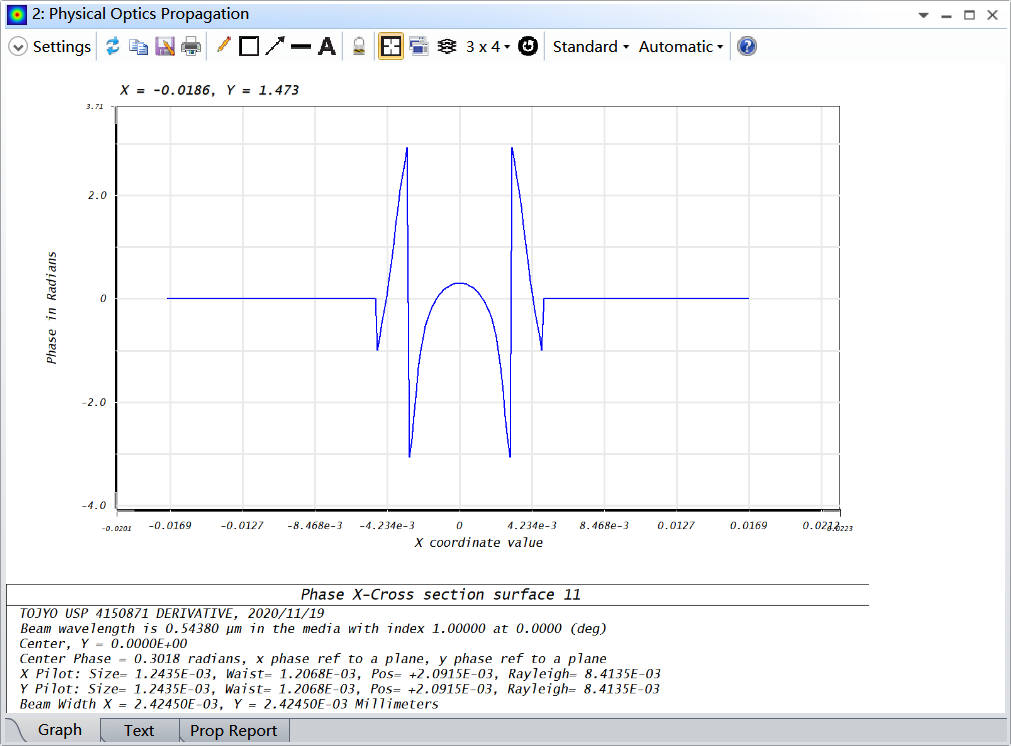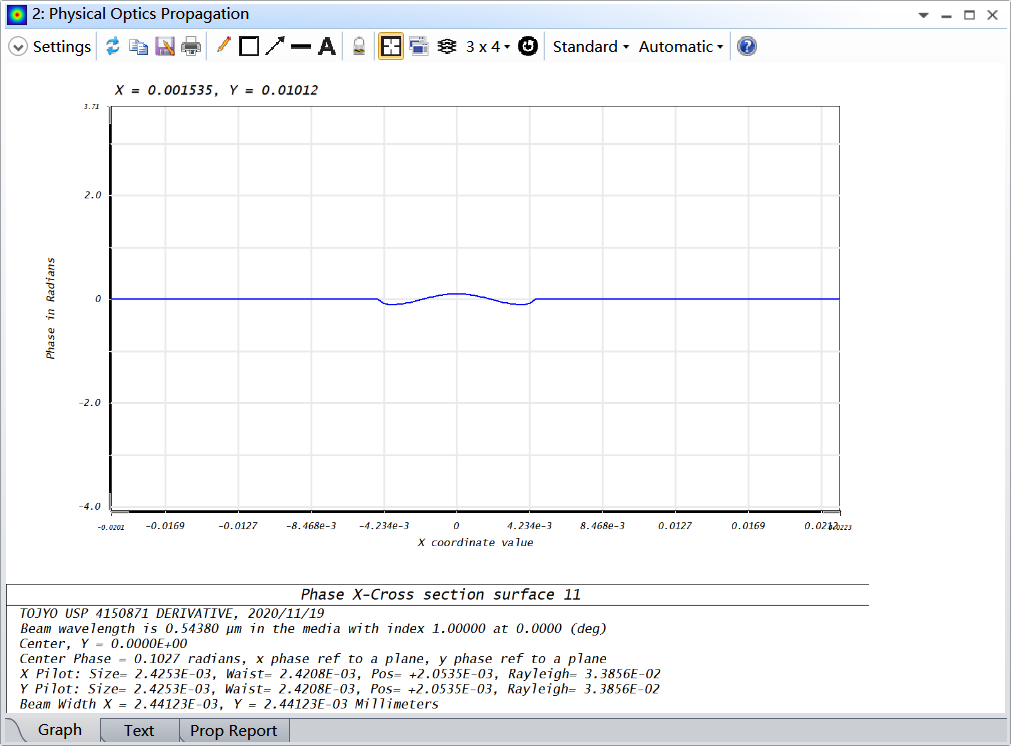Hello Xue,
Thanks for your question here!
In POP you can see two different sizes indeed, one for the pilot beam and another for actual propagated beam. The pilot beam is an ideal Gaussian beam that is used to guide the actual beam propagated through the system (i.e. it is used to to select appropriate propagation algorithm and to calculate the Probing Rays and Transfer Functions). But the pilot beam is different from the actual beam itself.
You may find more information about the Pilot Beam in the Help files at: The Analyze Tab (sequential ui mode) > Laser and Fibers Group > About Physical Optics Propagation > The Pilot Beam.
Regarding the pilot beam size in POP and the GBPS operand, the GBPS operand uses the Paraxial Gaussian Beam tool. Although the pilot beam in POP is an ideal Gaussian beam, it is different from the Paraxial Gaussian Beam tool, because the pilot beam is propagated by real rays, while Paraxial Gaussian Beam uses only paraxial data when propagating beams.
You may find more details about the sizes in this knowledgebase article:
What is the size of my POP beam?
I hope this helps, but if you have further questions, please let us know and we will be happy to help!
Best,
Csilla









